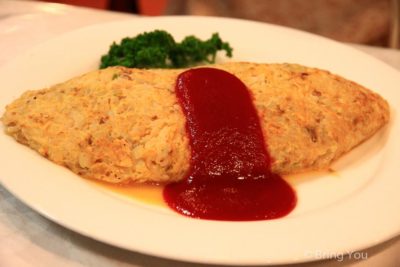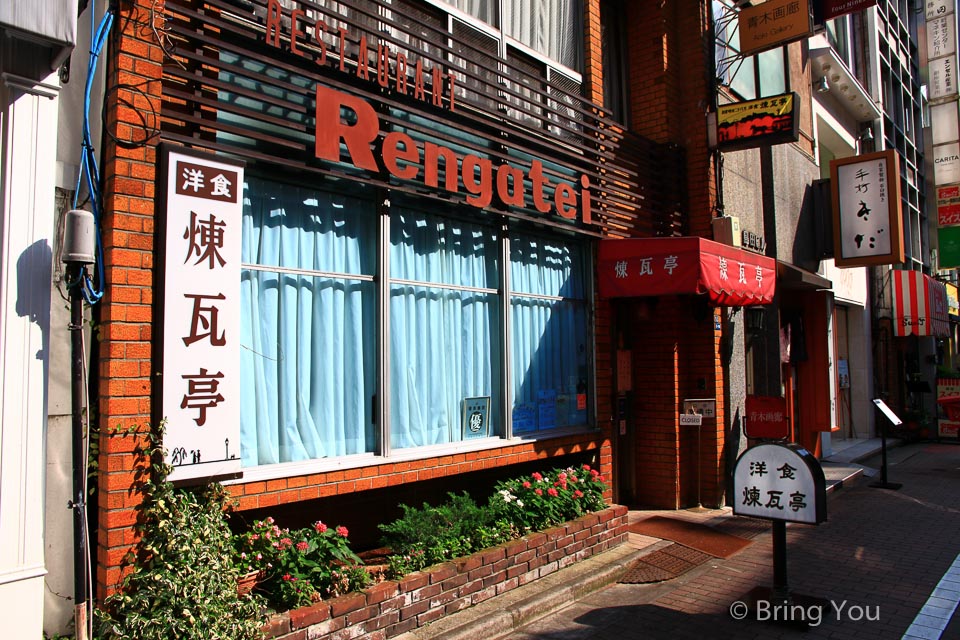
Does Japanese-Western cuisine fusion sound good in your ears? If so, head to Rengatei now. They even have a separate word for the cuisine branch called “yoshoku” (Japanified Western food) dishes, which have been in existence since the late 19th century.
Essentially, Rengatei serves such yoshoku dishes as pork cutlets, fried foods, omu-rice (rice omelet), and hayashi rice (hashed beef with rice).
If you’re curious as to how popular their restaurant is to local people, come at lunchtime when the place is packed with customers pouring out from the street.
As Japanese cuisine influenced by the West, there are Nagasaki Turkish Rice, Sasebo Lemon Steak, and Sasebo Burger.
【Transportation】 Ginza Rengatei
- Address: 3-5-16 Ginza, Chuo-ku, Tokyo
- Phone: 03-3561-7258
- Business hours: 11:15~14:30 16:40~21:00 (Closed on Sundays, Saturdays and holidays until 20:45)
From Ginza to Yurakucho, there are various high-end fashion boutiques along the way. Turning into a small alley in Ginza 2-chome, you can see a quaint red brick building, which is the location of Ginza Rengatei, also marked as yellow number 13 on the map of Ginza above. It is not too far from Kimuraya Bakery, and only a 3-minute walk from Ginza Station on the Tokyo Metro Ginza Line.
Explore Ginza: Your Ultimate Ginza Day Trip Shopping Guide – Complete Itinerary & Must-Try Food Spots
Recommended Dishes at Ginza Rengatei
The menu of Renga-Tei is only available in English and Japanese. If you can’t understand the menu, just remember to order their two signature dishes: the original deep-fried pork cutlet and the legendary origin of Japanese rice omelet, Rice Omelet. The pork cutlet, which originated from French cuisine, was first introduced to Tokyo, Japan in the early Meiji era. It was then improved by coating the pork with flour, egg, and breadcrumbs, and deep-frying it in tempura style, creating the Japanese-style deep-fried pork cutlet that became popular throughout Japan during the Meiji period. This is the dish that I think is “delicious” at Renga-Tei.
If you can’t read Japanese when ordering, you can order by looking at pictures or remembering “pork cutlet” and “omelette”!
Unlike today’s omurice, the century-old omurice (Ganso omuraisu)
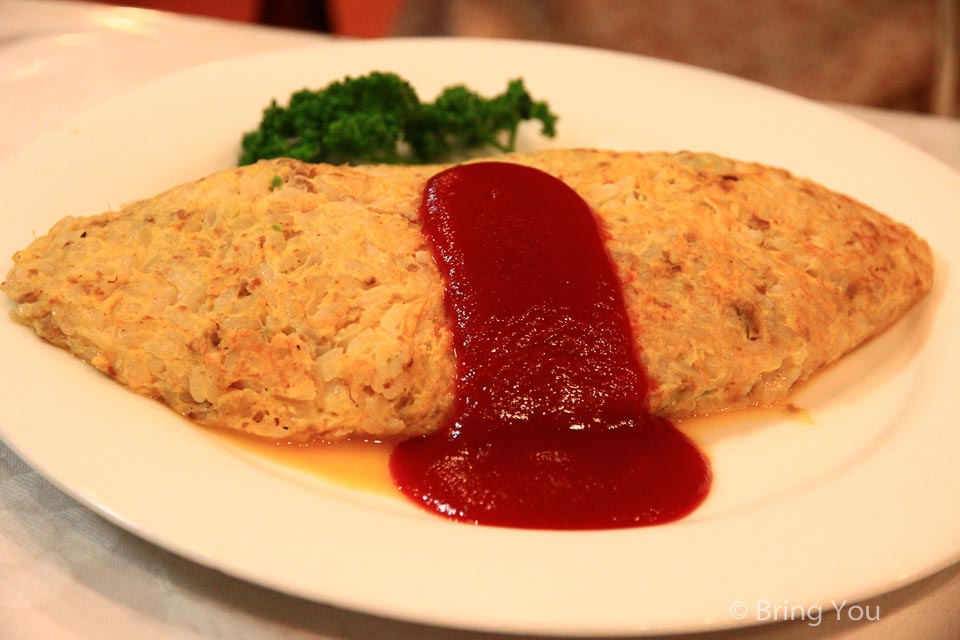
The omelette rice at the Ginza Rengatei is a mixture of Omelette (French savory egg roll) and rice, rather than an omelette on top of rice. It is served with tomato sauce that is not proportional to the amount of rice, allowing you to experience the taste of omelette rice that was popular among Tokyo residents a hundred years ago. However, in my mind, I still prefer the modern version of omelette rice… Sometimes, improved food can be even better than the traditional one.
The original fried pork chop is just without dipping sauce
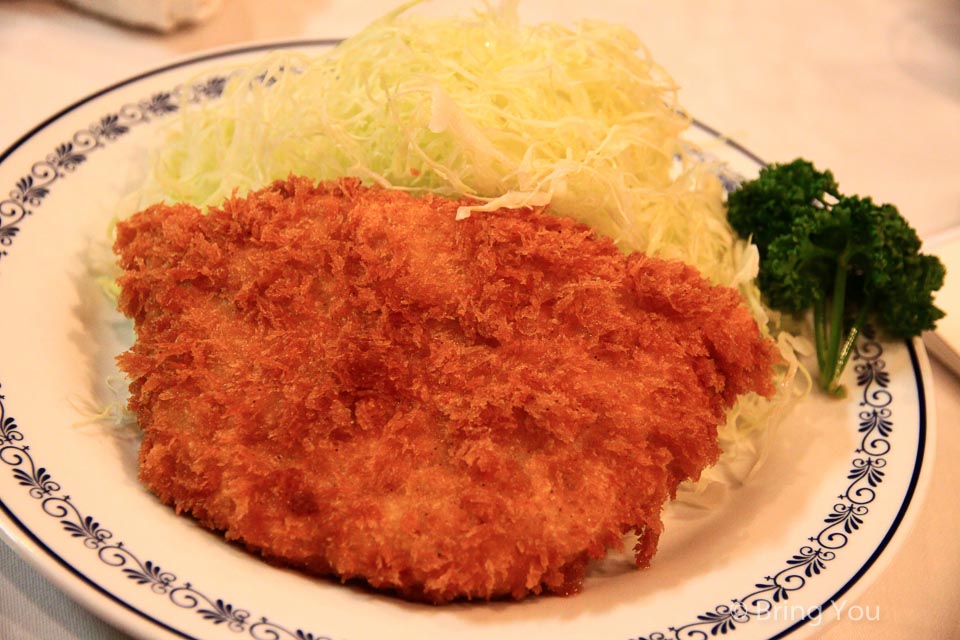
The process of ordering this original fried pork cutlet can be said to be super bullying to the waiter. Piao’er, who had been in Tokyo for almost five days and had not eaten curry rice, was very eager to eat fried pork cutlet with curry sauce. However, the menu at Renga-tei only had plain pork cutlet, which was like the picture, meaning there was no sauce to dip in. The only dishes with curry were curry fried shrimp rice, curry fried chicken cutlet, and curry and rice. There was no curry pork cutlet and rice. Do we have to order pork cutlet and then add curry and rice to have the curry pork cutlet rice we want? But just one curry and rice dish costs 1700 yen, which is the same as the fried pork cutlet (oh my god, after confirming with the waiter several times, 1700 yen really only includes rice and curry, without any other ingredients). So we had to order only the fried pork cutlet.
The fried pork chop is served without any sauce, just pure pork chop and shredded cabbage, emphasizing the natural flavor and crispy texture of the food. The fried pork chop at Lianwating is indeed excellent, at least in my opinion, better than He Xing pork chop. However, the shredded cabbage is hard and bitter, similar to what I have experienced in some Tokyo restaurants. I am not sure if Taiwan’s environment is more suitable for growing sweet cabbage or if there are other factors that make Japanese cabbage bitter.
Antique Cash Register
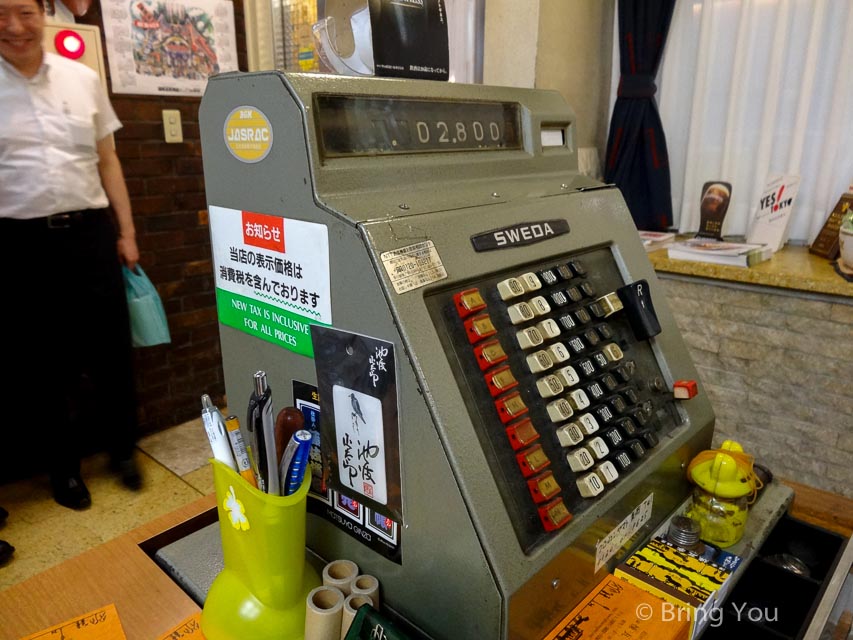
The owner and his wife of the Ginza Rengatei are both very friendly and hospitable from the bottom of their hearts. When we discovered this antique cash register, the owner’s wife began speaking to us in Japanese-style English, telling us that the machine is already hundred-year-old, and inviting us to take a close-up photo of it. It seems that they are quite proud of their shop!
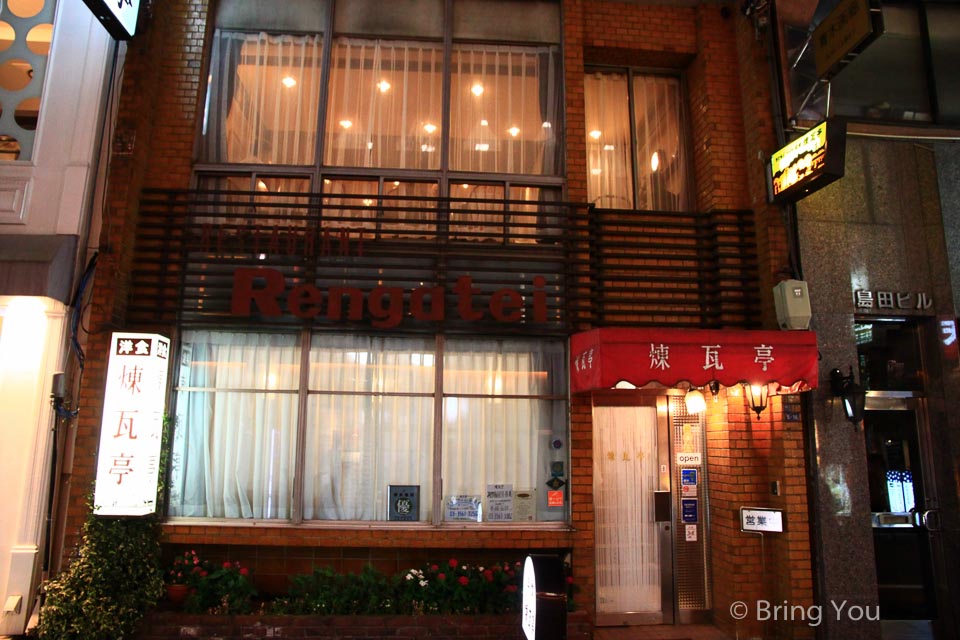
Ginza Rengatei is a century-old Western-style restaurant. The dining atmosphere is just as luxurious and sophisticated as that of Ginza. The guests are mostly working professionals over the age of 30 who converse in hushed tones. Ginza Rengatei’s fried pork cutlet is truly eye-catching, but its high price and small portion size may not be suitable for budget-conscious travelers. However, if you want to experience the atmosphere and flavor of Japanese century-old Western-style cuisine, we highly recommend Ginza Rengatei!
Ultimate Tokyo Food Guide: 20 Best Japanese Foods to Try in Tokyo
